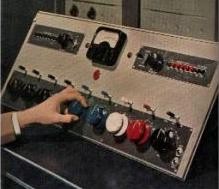Kid Squid
Well-known member
'Allo Chaps,
After reading through various posts regarding Switched Brigded T Attenuators, I'm still covered in sand
Basically, I'm after a Switched Bridged T Attenuator - 2 pole, 11 way Rotary Switch, for a RCA BC-2B Mic Pre.
The attenuator will go between the secondary of the mic input transformer, and the grid of V1.
What do I need to know before I start, Then , How do I work out the resistances for the Switched bridged T,
Any help is appreciated,
Best Regards,
Steve :thumb:
P.S. Sorry to be so Naiive :?
After reading through various posts regarding Switched Brigded T Attenuators, I'm still covered in sand
Basically, I'm after a Switched Bridged T Attenuator - 2 pole, 11 way Rotary Switch, for a RCA BC-2B Mic Pre.
The attenuator will go between the secondary of the mic input transformer, and the grid of V1.
What do I need to know before I start, Then , How do I work out the resistances for the Switched bridged T,
Any help is appreciated,
Best Regards,
Steve :thumb:
P.S. Sorry to be so Naiive :?



